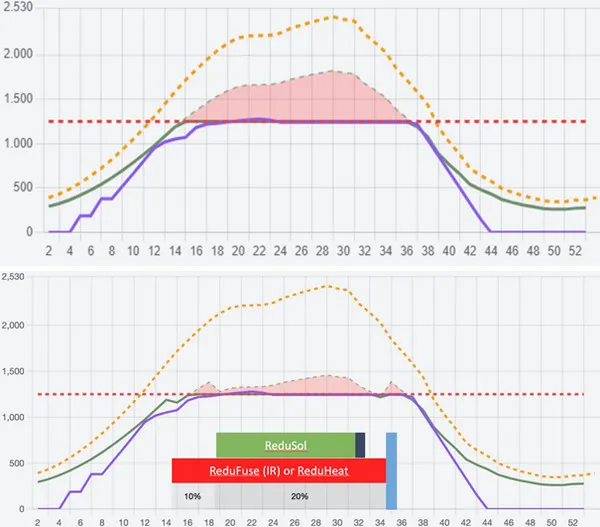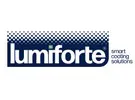A total of 45 participants were briefed last Wednesday afternoon by Paul van Gils of Lumiforte and Wim van Wingerden of ProJoules on light in cultivation, or actually on how too much light can be a problem in various crops, and how growers can prevent this.

Red Cloud
In a webinar, two practical cases were discussed, one from Austria and one from Mexico. The cases covered how to deal with an excess of light, which coating growers should apply first (ReduFuse IR/ReduHeat) and what the subsequent strategy with Redusol and spray chalk looks like. The cleaning strategy for both cases was also discussed.
In the technical story about the correct use of coatings, it was also about what it costs if growers do (too little) about an excess of light. What does a drop in production cost, what does it cost if the fruits are too small or if there are blossom-end rot fruits in the crop? Paul and Wim also suggested possible solutions for examples that might occur in practice.

The above cultivation plan for a crop in Austria was discussed in the webinar. In the image above, the 'red cloud' indicates the surplus of joules of light. In the image below, coating has been applied and thereby the light surplus is limited.
Afterward, there was time for questions. Wim and Paul were, among other things, surprised with a question about the maximum number of joules a lettuce plant can absorb per day. Wim: "We have no experience with that. Our thought is that there is also a maximum number of joules here. Perhaps around 1600 joules, measured outside."
After forty-five minutes, the webinar was over as promised. Paul and Wim look back on the webinar with satisfaction.
 Wim and Paul had fun. This photo proves it for those who did not follow the webinar.
Wim and Paul had fun. This photo proves it for those who did not follow the webinar.
For more information:
ProJoules
info@projoules.com
www.projoules.com

